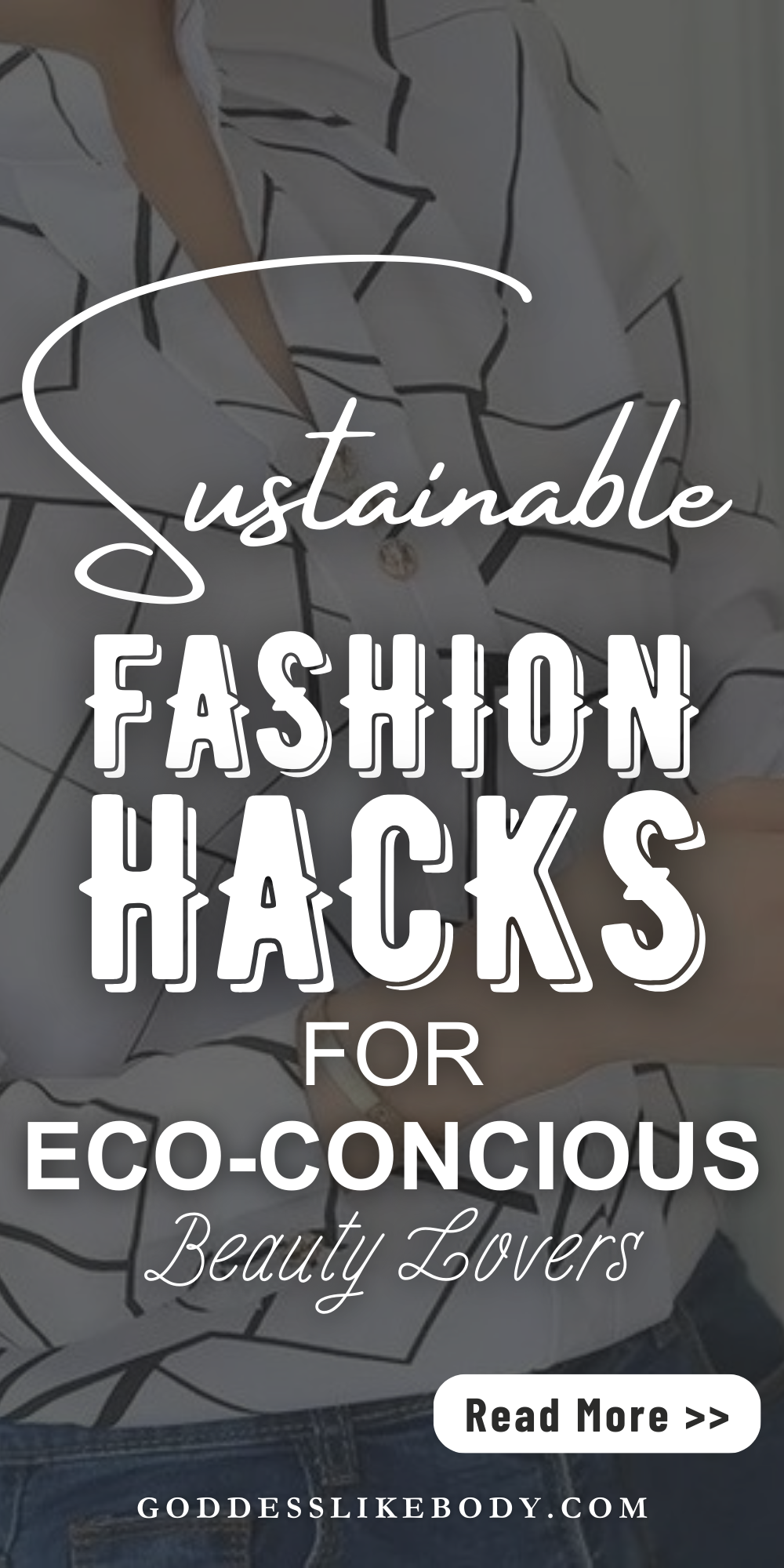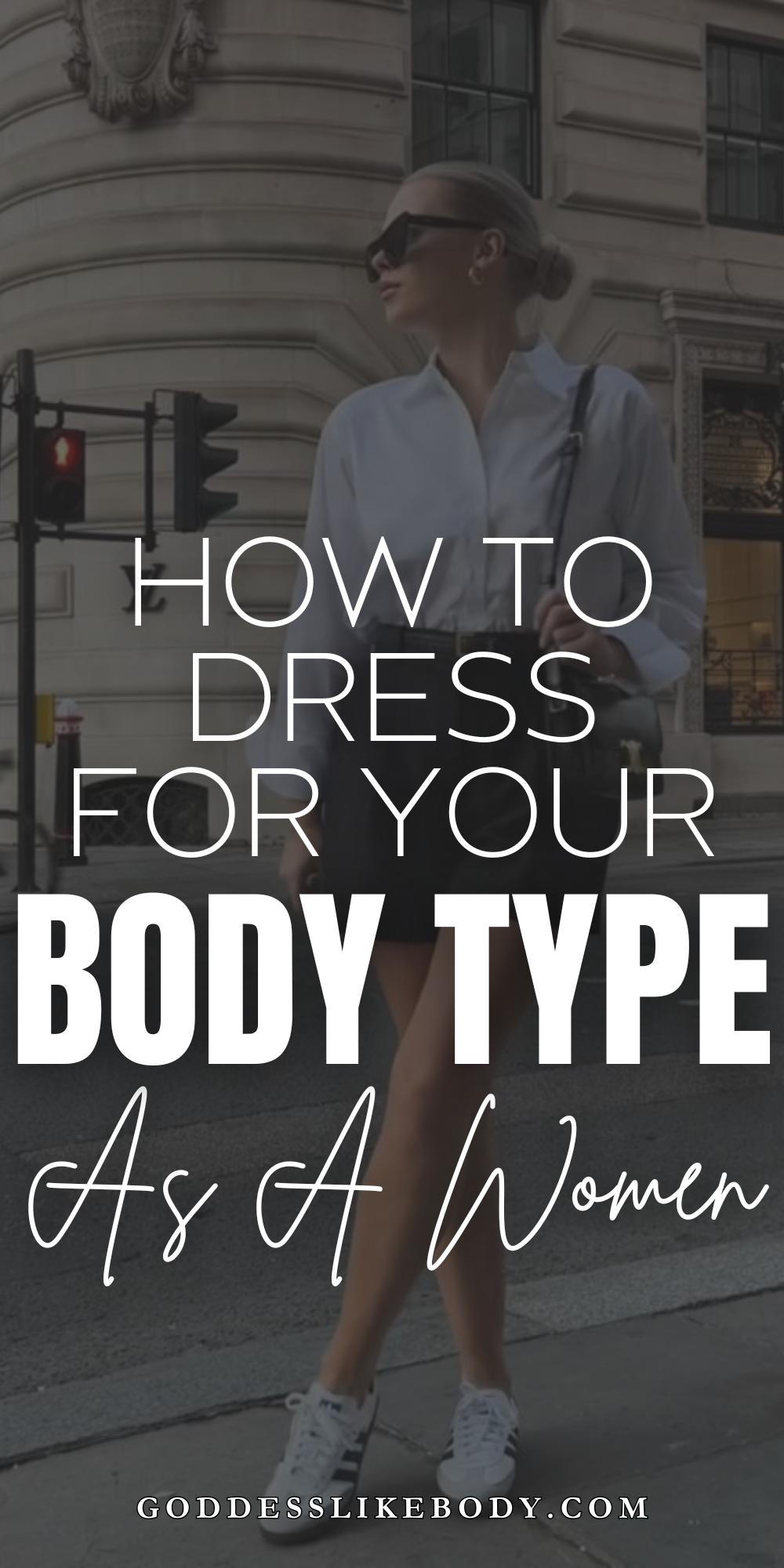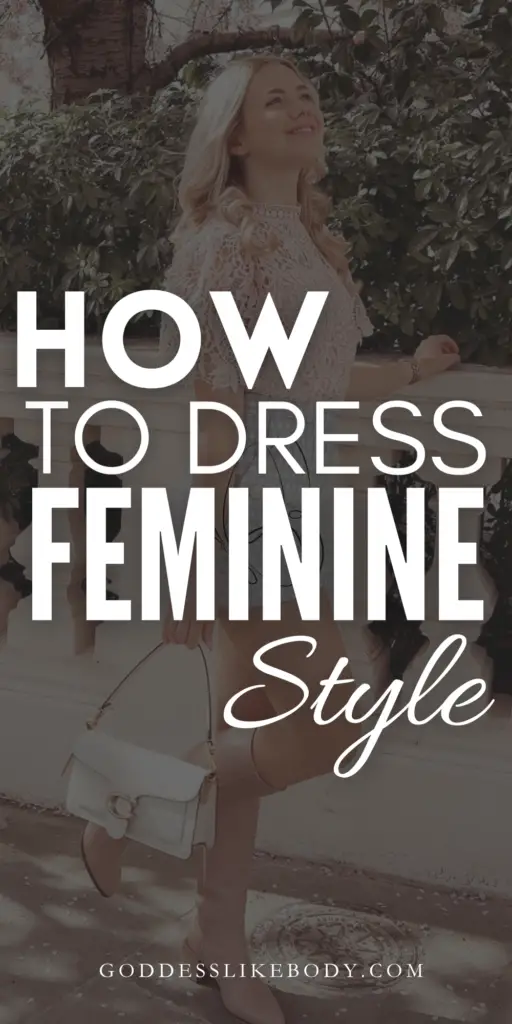Have you ever stood in front of your closet, overwhelmed by the clothes you own, but still struggling to find things that make you feel confident and beautiful? You’re not alone. There are some general rules that can help you make the right choice when choosing clothes that suit your body.
First of all, it is important to understand your body type and know which style and cut suits you best.
Second, consider the fit of your clothes; Clothes that are too tight or bags that are too heavy will look bad.
Third, pay attention to proportion; Measure the differences between your body to create harmony.
Busy? Save this pin for later.
I. General Tips for Choosing Clothes that Flatter Your Figure
Some specific tips include:
– Emphasize your assets:
If you have a small waist, consider wearing belts or fitted tops to highlight this feature. If you have long legs, choose skirts or pants that show them off.
– Use color strategically:
Dark colors can create a slimming effect, while bright colors can draw attention to certain areas. Choose colors that flatter your skin tone and use them strategically to enhance your figure.
– Pay attention to fabric: Certain fabrics drape better on different body types.
For example, flowy fabrics like chiffon or silk can create a softer look for curvier figures, while structured fabrics like cotton or denim can add definition to straighter figures.
– Consider layering: Layering can help create dimension and balance in your outfit.
For example, adding a blazer or cardigan over a dress can help define the waist and add structure.
A. Importance of wearing clothes that flatter one’s figure
Wearing clothes that flatter your figure is more than just a matter of aesthetic appeal. It’s a powerful means of self-expression and a way to enhance your self-esteem.
The clothes we choose to wear can profoundly influence our mood, our self-perception, and the image we project to others.
When we wear clothes that flatter our figure, we feel more confident and comfortable in our skin. This confidence radiates to those around us, creating a positive impression.
Additionally, wearing clothes that accentuate our best features can boost our self-esteem and make us feel proud of our bodies.
B. How the right fit can enhance confidence and style
Choose the right style to coordinate when choosing the style that shows off your best self. When clothes fit you well, they increase your self-confidence, make you look more stylish, and allow your personal style to shine.
Ill-fitting clothes can make you look shapeless or disproportionate, which can negatively impact your overall appearance.
On the other hand, when you wear clothes that fit you well, they enhance your natural curves and proportions, making you look and feel your best.
You Might Also Like: 5 Simple Ways to Find the Perfect Foundation for Your Skin Tone
II. Understanding Body Types
A. Brief explanation of different body shapes (hourglass, pear, apple, rectangle)
Understanding your body type is crucial when it comes to choosing clothes that flatter your figure. Body shapes generally fall into four main categories: hourglass, pear, apple, and rectangle.
- The hourglass figure is characterized by an equally balanced bust and hip ratio with a well-defined waist. This body type is often considered the most desirable, as it has a balanced silhouette.
- Pear-shaped individuals have wider hips compared to their busts and shoulders. The key to dressing this body type is to balance the proportions and draw attention to the upper body.
- Apple-shaped figures carry more weight in the middle section, with a fuller bust and waist. The goal for this body type is to create the illusion of a defined waist and draw attention away from the midsection.
- Rectangle shapes have a straight up-and-down figure with little waist definition. This body type aims to create the illusion of curves and add visual interest to the silhouette.
B. Identifying one’s body type
To determine your body shape, stand in front of the mirror and look at your proportions. Check your shoulder width, chest size, waist size, and hip size.
By comparing these proportions, you can determine which category you fall into. It’s important to note that everyone’s body is unique, and these categories are just general guidelines. You may not fit perfectly into one category, and that’s okay.
The goal is to understand your body shape and choose clothes that enhance your best features while creating a balanced look.
III. Dressing for Different Body Shapes
A. Hourglass figure
1. Highlighting the waistline
If you have an hourglass body type, one of your best features is your thin waist. To do this, choose clothes such as jeans, paisley or high-waisted skirts and trousers.
These styles will emphasize your waistline and create a flattering silhouette.
2. Choosing tailored and structured clothing
Tailored and structured clothing can balance your proportions and emphasize your curves. Look for pieces like structured blazers, tailored dresses, and fitted blouses that follow your body’s natural shape.
These types of clothing will highlight your curves and create a polished and put-together look.
3. Emphasizing curves
Don’t be shy about emphasizing your curves. Choose clothes that hug your body and show off your figure, such as body-con dresses, pencil skirts, and skinny jeans.
These styles will accentuate your curves and enhance your hourglass shape.
B. Pear-shaped figure
1. Balancing proportions
If you have a pear-shaped figure, aim to balance your proportions by drawing attention to your upper body.
You can do this by wearing bright colors or patterns on top and keeping the lower half of your outfit in darker shades. This color contrast will help create a sense of balance and draw the eye upward.
2. Enhancing the upper body
Enhance your upper body by choosing tops with interesting necklines, details, or embellishments. This can help draw the eye upward and create a sense of balance.
Opt for tops with ruffles, lace, or statement sleeves to add volume to your upper body and create a more proportionate look.
3. Minimizing focus on the lower body
To minimize focus on your lower body, opt for A-line skirts, wide-leg pants, and other styles that skim over your hips and thighs rather than clinging to them.
These types of bottoms will create a more balanced silhouette and draw attention away from the hips.
C. Apple-shaped figure
1. Creating the illusion of a defined waist
If you have an apple-shaped figure, you can create the illusion of a defined waist by choosing clothes with strategic seaming or belting at the smallest point of your waist.
Wrap dresses and tops with waist-defining details can be especially flattering. These styles will draw attention to your waist and create a more hourglass-like shape.
2. Opting for styles that flatter the midsection
Choose styles that skim over your midsection rather than clinging to it. Empire waist dresses, loose-fitting tops, and A-line skirts can all be great choices.
These styles will create a more balanced look and minimize focus on the midsection.
3. Selecting clothing with vertical lines or patterns
Vertical lines or patterns can help elongate your figure and make you appear slimmer. Look for striped tops, vertical seaming, and other details that draw the eye up and down.
These patterns will create a visual illusion of length and create a more balanced silhouette.
D. Rectangle-shaped figure
1. Adding curves to the silhouette
If you have a rectangle-shaped figure, you can add curves to your silhouette by choosing clothes with ruching, gathering, or other details that create the illusion of a more curvaceous figure.
Look for dresses or tops with ruffles at the bust or hips, as well as bottoms with pleats or ruching.
2. Creating the illusion of a defined waist
You can create the illusion of a defined waist with belted styles, wrap dresses, and tops with peplum details. These styles will cinch in at the waist and create the appearance of curves.
3. Playing with different textures and details
Experiment with different textures and details to add interest to your outfits. Ruffles, pleats, and other embellishments can help break up the straight line of your figure and add visual interest.
Look for tops or dresses with textured fabrics or details like lace or embroidery.
You Might Also Like: 9 Easy Ways to Look More Put-Together in 5 Minutes or Less
IV. Tips for Choosing Clothes That Flatter Any Figure
A. Understanding personal preferences and comfort
While it’s important to understand body shapes and how to dress them, it’s also crucial to consider your personal preferences and comfort.
The most flattering outfit is the one you feel best in. Pay attention to the fabrics, silhouettes, and styles that make you feel confident and comfortable.
B. Emphasizing favorite features
Whether it’s your toned arms, slender waist, or long legs, everyone has features they love. Dress to emphasize these features by choosing clothes that draw attention to them.
For example, if you love your legs, opt for skirts or dresses that hit above the knee. If you love your waist, choose tops or dresses with cinching details.
C. Knowing the appropriate clothing sizes and measurements
Knowing your measurements and the correct clothing size for each brand can make shopping less stressful and more successful. Don’t fixate on the number on the tag; what’s most important is how the clothes fit and feel.
Pay attention to the size charts provided by brands and take accurate measurements of your bust, waist, and hips to ensure a proper fit.
D. Experimenting with different styles and silhouettes
Don’t be afraid to experiment with different styles and silhouettes. Trying new things can help you discover what you like and what looks best on your body shape.
Step out of your comfort zone and try on different types of clothing to see what flatters your figure and makes you feel confident.
V. Dressing for Specific Occasions
A. Casual outfits
For casual outfits, comfort is key. Choose clothes that allow you to move freely and express your style.
Whether it’s jeans and a T-shirt or a casual dress, make sure it fits well and flatters your figure. Opt for breathable fabrics and relaxed silhouettes for a comfortable and stylish look.
B. Professional attire
In a professional setting, it’s important to dress appropriately while still highlighting your figure. Choose tailored pieces that project a professional image and make you feel confident.
Opt for well-fitted blazers, tailored trousers, and classic dresses that flatter your body shape and create a polished look.
C. Evening wear
Evening wear is your chance to shine. Whether it’s a floor-length gown or a little black dress, choose styles that flatter your figure and make you feel fabulous.
Look for dresses with strategic cut-outs, asymmetrical details, or embellishments that draw attention to your best features. Don’t be afraid to use bold colors or statement accessories to elevate your evening look.
D. Special occasions
For special occasions, consider the event and dress accordingly. If it’s a wedding, a flirty cocktail dress might be appropriate. A more formal gown may be necessary if it’s a black-tie event.
Whatever the occasion, make sure your outfit flatters your figure and makes you feel confident. Pay attention to the dress code and choose styles that align with the formality of the event.
VI. The Role of Colors and Patterns
A. Choosing colors that complement the skin tone
It is important to consider your skin tone when choosing a color—yellow or golden warm skin with beautiful colors like yellow, orange, and red.
Cool skin tones, with pink or blue undertones, look better in cool colors like blue, green, and purple. Neutral colors like black, white, and gray can be flattering on all skin tones.
B. Using patterns to accentuate or disguise features
Patterns can be a great way to add visual interest to your outfit, but it’s important to choose the right pattern for your body type.
Smaller patterns can make you look slimmer, while larger patterns can add curves. Stripes can be elongating, while horizontal stripes can make you look wider. If you’re unsure about a pattern, try it on before you buy it.
C. Balancing proportions with colors and patterns
You can use color and pattern to balance each other. For example, if you have a wider waist, you can wear dark-colored clothes underneath to emphasize your waist.
If your waist is thin, you can wear colorful clothes on your upper body to make your breasts look larger.
D. Creating a focal point with colors and patterns
You can use colors and patterns to create a focal point in your outfit. For example, if you want to draw attention to your face, wear a brightly colored top. If you want to draw attention to your legs, wear a patterned skirt.
E. Expressing your personality with colors and patterns
Don’t be afraid to experiment with colors and patterns to express your personality. There are no hard and fast rules, so have fun and find what you love.
You Might Also Like: How to Express Your Feminine Power Through Fashion
FAQ
Q1: Why is it important to wear clothes that flatter your figure?
A1: Wearing clothes that flatter your figure is important because it enhances self-expression, boosts self-esteem, and creates a positive impression.
Q2: How can the right fit enhance confidence and style?
A2: The right fit enhances confidence and style by boosting confidence, making you look more polished and put-together, and allowing your style to shine through.
Q3: How can I identify my body type?
A3: To identify your body type, observe your proportions in front of a mirror and compare the width of your shoulders, the size of your bust, the shape of your waist, and the size of your hips.









Leave a Reply
You must be logged in to post a comment.